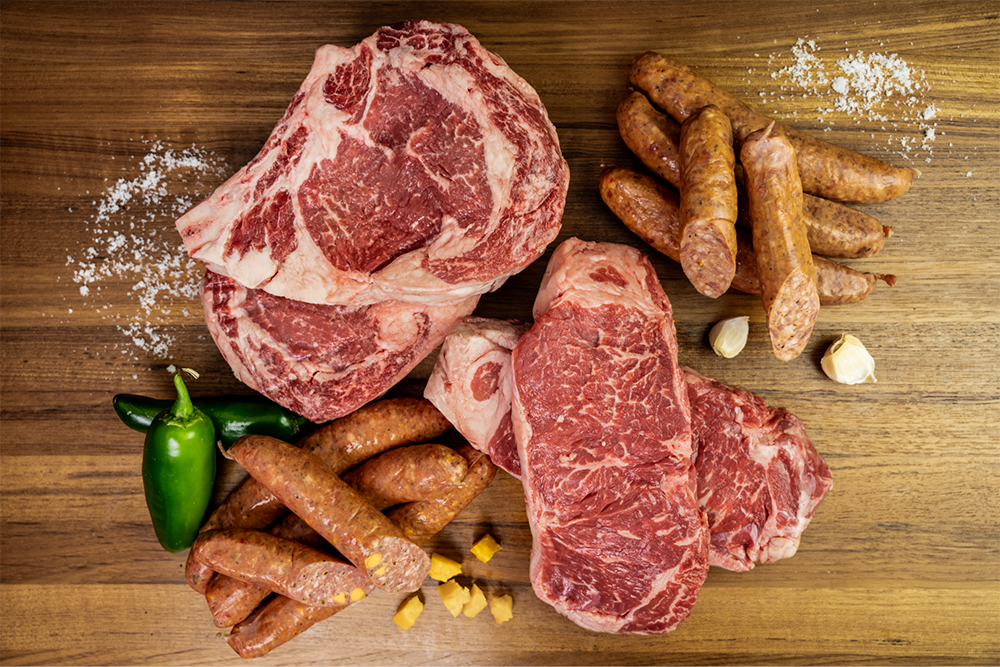Discover the Art of the Butcher's Cut in a Modern Meat Market
In the ever-evolving landscape of contemporary meat markets, the butcher's cut has actually transcended its conventional origins, combining old-time workmanship with contemporary methods. What really sets the modern butcher apart is their capacity to forge a much deeper connection in between consumers and the origins of their meat.
Evolution of Butchery Techniques
The advancement of butchery strategies mirrors a rich tapestry of innovation and adjustment driven by innovations in modern technology, modifications in consumer need, and a deeper understanding of meat scientific research. Historically, butchery was a craft passed down through generations, with approaches refined over centuries to make the most of return and taste. Nevertheless, the industrial transformation introduced mechanization, transforming typical practices and making it possible for large-scale processing.
The mid-20th century saw butchery strategies further fine-tuned by clinical insights right into muscular tissue biology and meat aging, enhancing both inflammation and preference. Advancements like vacuum cleaner packaging and refrigeration prolonged item shelf-life, enabling butchers to diversify offerings and improve quality assurance. This period additionally marked the surge of specialized tools, such as band saws and meat slicers, which increased accuracy and effectiveness in meat processing.

Computerized systems currently help in monitoring pet provenance and enhancing cuts to fulfill specific customer preferences. Furthermore, a resurgence in artisanal butchery has arised, mixing conventional skills with modern-day expertise to provide to consumers looking for ethical and lasting meat choices.
Recognizing Meat Cuts
Recognizing the ins and outs of meat cuts is essential for both butchers and customers seeking high quality and worth. For butchers, accurate cuts show ability and respect for the craft, making sure very little waste and optimal return.

Comprehending muscle mass structure is essential; muscle mass utilized extra often by the pet have a tendency to be tougher and are best suited for sluggish cooking approaches, while less-used muscular tissues, like those located in the loin, are extra tender and suitable for grilling or roasting. Familiarity with these differences encourages customers to make enlightened selections, boosting their cooking endeavors.
Choosing Quality Meat
Choosing the right meat entails greater than just picking a visually enticing item from the display screen. bagley farms meat market edwardsville il. The art of picking high quality meat requires a critical eye and expertise of specific characteristics that represent quality and excellence. Firstly, pay attention to the shade; beef ought to have an intense, cherry-red color, while lamb must display a soft pink tone, and pork a light pink. This shows the meat is fresh and hasn't been subjected to oxygen for also long.
Second of all, take into consideration the marbling, which refers to the white streaks of fat within the muscular tissue. Proper marbling is a crucial indication of inflammation and taste, as it thaws during cooking, improving the meat's juiciness. Bear in mind, higher marbling typically associates with exceptional quality cuts, such as USDA Prime.
Appearance is another important aspect; meat needs to really feel firm to the touch, not slimy or overly soft. Furthermore, bear in mind the fragrance. Fresh meat ought to have a clean, neutral odor, without any kind of sour or repulsive smells.
Pairing Cuts With Cooking Techniques

On the other hand, harder cuts like brisket and chuck roast are abundant in collagen, which breaks down right into gelatin when cooked gradually. These cuts are optimal for braising or slow-moving roasting, allowing the meat to soften over time and establish deep, intricate flavors. In a similar way, cuts such as short ribs and pork shoulder make out well with slow-cooking methods, where expanded cooking times transform their robust structures right into succulent recipes.
Lamb shanks and oxtail, which need long term food preparation to tenderize, are perfect prospects for cooking or sluggish simmering. These techniques coax out abundant, hearty flavors while preserving wetness. By recognizing the unique characteristics of each cut, chefs and home cooks alike can raise their culinary creations, guaranteeing each meal is both pleasing and remarkable.
The Butcher's Role Today
Navigating the evolving landscape of the modern-day meat market, the butcher's duty today expands beyond simple prep work of cuts. Contemporary butchers are culinary artisans, you could try this out educators, and advocates for lasting techniques.
In enhancement to crafting exact cuts, butchers currently engage directly with customers, offering cooking advice and tailoring selections to suit individual needs and choices. Their competence in meat aging, marbling, and flavor profiles empowers consumers to make educated decisions, improving their culinary experiences. This customized service exemplifies the butcher's evolving role as a trusted consultant in the kitchen area.
Additionally, butchers are essential in reducing waste, utilizing whole animals to create diverse products such as sausages and supplies. This extensive approach not just appreciates the animal however additionally aligns with contemporary sustainability objectives. By doing this, the modern-day butcher embodies both practice and development, adjusting to an ever-changing market while protecting the virtuosity and integrity of their craft.
Final Thought
Proficiency in understanding varied meat cuts and high quality indications equips butchers to offer enlightened recommendations, straightening details cuts with optimal food preparation approaches. By recognizing historic methods while welcoming contemporary needs, the butcher's role continues to be important in today's sophisticated meat market.
Comments on “Go To Bagley Farms Meat Market Edwardsville IL for Farm-Fresh Meat and Specialty Cuts”